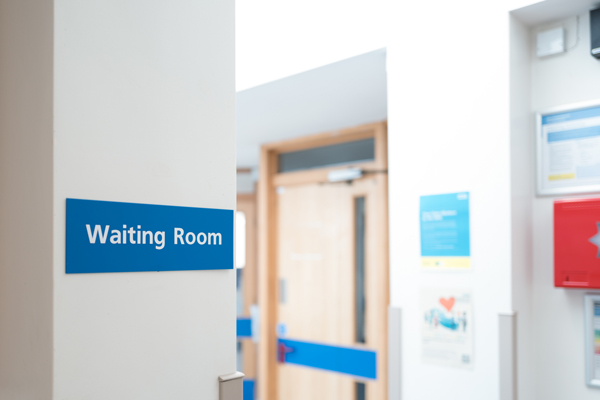Virtual Wards - How will they impact the role of the Community Nurse?

Virtual wards allow patients to be monitored at home and get the care they need without being in hospital. The NHS is hoping to implement more of them this year, requiring increased levels of staff who understand what virtual wards are and their vital role in reducing the pressure on the NHS. This includes both hospitals and community care systems, meaning the role of the community nurse is likely to be affected as the focus on virtual wards increases.
But what exactly is a virtual ward and what impact will they have on community nurses? In this helpful blog, we will explore everything community nurses need to know about virtual wards, including how virtual wards will impact their role.
What is a virtual ward?
The term ‘virtual ward’ refers to support that is in place to monitor patients while they are at home (including care homes) rather than in hospital. This is designed to be more comfortable, convenient and safe for the patient. They are used for people with long-term health conditions to help monitor and manage their symptoms, as well as for acute conditions, such as respiratory infections, for example. If the clinician has determined that it is safe for a person to be discharged from the hospital to the virtual ward, the person will be provided with a virtual ward kit which allows them to be safely monitored from home.
The kit includes a tablet which guides the patient through setting up the equipment and allows them to speak to a nurse remotely so they can explain any symptoms they may be experiencing and gain support. It comes with a modem so that even people without a home WiFi connection can use it. Using wearables and medical devices, key parameters of the patient are monitored remotely, such as blood pressure, oxygen levels, skin temperature and respiration.
Clinical teams are able to see these measurements without having to visit the patient. If the vital signs indicate a problem, staff can take immediate action, whether that’s calling the patient, organising a face-to-face consultation or calling an ambulance. The tablet has an emergency button on it which the patient can press if they feel unwell, which will also immediately alert the staff.
Virtual wards were mainly introduced as a response to the COVID-19 pandemic, to reduce the amount of unnecessary face-to-face contact within healthcare in an attempt to reduce the spread of the virus. It was implemented in several hospitals across the country and found to be very effective, so its use is increasing, requiring higher levels of staffing.
What are the benefits of virtual wards?
Hospital staff and patients alike have identified many benefits of using virtual wards. Using virtual wards frees up hospital beds and the eases workload of nurses, which is essential in the wake of a staffing crisis and growing NHS backlog. As a result, the transmission of infections between staff and patients is decreased. This also often allows staff to keep a closer eye on patients’ vital signs for longer periods of time.
It is also much more pleasant for the patient to be treated in a familiar environment than in a hospital. Patients often struggle with sleep and exercise when admitted to the hospital, which can have a negative effect on their recovery and mental health. Being able to enjoy their home comforts, resume their normal activities and communicate with their family is beneficial to the overall health of the patient. They can do this with the peace of mind that they are still being monitored by expert staff using advanced technology. The technology is easy to set up and simple to understand for the patient and their family to manage at home or in a care home.
How will virtual wards impact the role of the community nurse?
This is likely to impact the role of community nurses in positive ways. Virtual wards make it easier to provide monitoring and care for patients without the need for face-to-face contact, increasing patient and staff safety and reducing overall workload. Patient vitals are monitored all the time, so better clinical decisions can be made quicker which will reduce the overall time the patient requires care. The community nurse will be equipped with the resources they need to organise face-to-face consultations where necessary very quickly. This can reduce the need for regular home visits, for example.
In addition, there is funding in place from the NHS Service Development Fund to increase the number of nurses that are hired for virtual wards. NHS England provided this funding with ambitious plans, which ask integrated care systems (ICSs) to deliver virtual ward capacity equivalent to 40-50 virtual beds per 100,000 population by December this year. This equates to around 24,000 virtual beds in total.
This means that the demand for community nurses to take up virtual wards jobs in the NHS is going up. Virtual wards represent a bridge between community and acute care and having community nurses on board to aid this transition is essential for this large rollout to be effective. Community nurses have local knowledge and important skills needed to provide personalised, empathetic care to a range of individuals in many settings. Virtual wards are a new and exciting way for community nurses to put their valuable range of skills to good use that will make a real difference in people’s lives by increasing the support for patients in their own homes.
Get in contact
If you are a community nurse looking for a new and rewarding job within virtual wards, contact Globe Locums today. We are a leading healthcare recruitment company that places candidates into the NHS in roles that suit them, and we love helping community nurses to find the ideal job. Or, take a look at our live vacancies to find out what jobs are available now.

Latest Nursing Jobs
We currently have a variety of locum and permanent vacancies across the UK and Ireland





